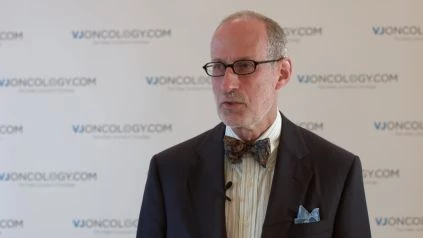Jeffrey Weber, MD, PhD of the NYU Langone Medical Center, New York, NY, discusses his introductory plenary lecture on the revolution and evolution of immunotherapy in melanoma given at the 2016 World Congress of Cancers of the Skin (WCCS) and the Congress of the European Association of Dermato-Oncology (EADO) in Vienna, Austria. Prof. Weber highlights that first, he discussed how immunotherapy for melanoma has changed and developed over the years. He believes that it is clear that the revolution is the fact that we can now see what is described as the tail on the curve of survival. For the first time, we have patients who have long-term survival in melanoma, with the use of PD-1 blockade (ipilimumab with nivolumab), where some of the patients may be cured. This brings up the discussion of curing melanoma, a topic which has only just recently come about. Just 10-15 years ago, the median survival for melanoma patients was under a year, and the one year survival was around 35%. He highlights that matters have changed dramatically, with the new drug approvals within the US and the EU. Since 2011, we have had a 70%+ one year survival rates, and median survival has now tripled from what they were 10 years ago. What has evolved is that we now understand the immune-related adverse events, and we can now see the unusual kinetics of responses Additionally, he highlights that what will be a bit of a revolution, is the understanding that some patients do not respond to certain novel drugs because the tumor microenvironment is non-inflamed (also called a cold tumor microenvironment). Alongside this, he emphasizes that a better understanding of how we can convert a cold microenvironment to a warm microenvironment will be the next revolution, which would enable for the increase yet again the tail on the curve of survival and the potential for curing patients with melanoma.
[the_ad id="32629"]

